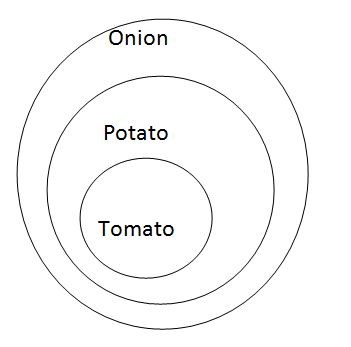Question
Statements: All tomatoes are potatoes. All
potatoes are onions. Conclusions: I. Some potatoes are tomatoes. II. All tomatoes are onions. In each question below are given two statements followed by two conclusions numbered I and II. You have to take the two given statements to be true even if they seem to be at variance with commonly known facts and then decide which of the given conclusions logically follows from the two given statements, disregarding commonly known facts. Give Answer:Solution
All tomatoes are potatoes (A) ⇒ conversion ⇒ some potatoes are tomatoes (I). Hence, conclusion I will follow. All tomatoes are potatoes (A) + All potatoes are onions (A) = All tomatoes are onions (A). Hence, conclusion II will also follow. Alternate Method: 
How is E related to F?
Answer the questions based on the information given below.
There are six members F, G, H, I, J and K in the family of three generations. No s...
Answer the following questions based on the information given below.
There are eight persons G, H, I, J, K, L, M and N in a family of three gen...
Answer the questions based on the information given below.
Nine persons Q, R, S, T, U, V, W, Y and Z live in a family of three generations. V...
How is G related to H?
How is U related to the mother of V?
In a class of 40 students, Monika is 13th from the left and Rakesh is 32th from the right end. How many students are there between...
Who is mother of S?
Z is the son-in-law of Q and is the brother-in-law of W who is the brother of I. I is the daughter of Q. How is W related to Q?
How is N related to the wife of S?


